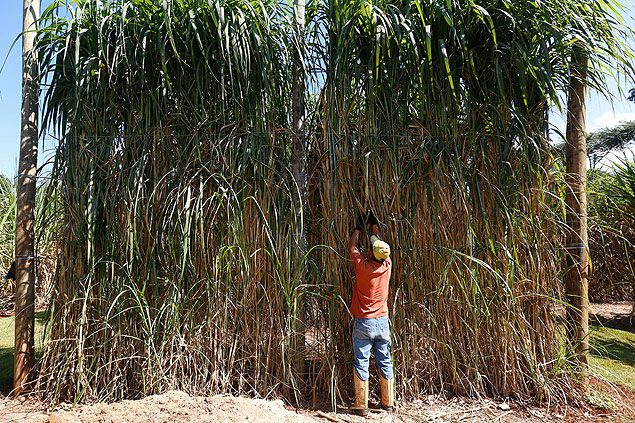Latest Photo Galleries
Brazilian Markets
16h35 Bovespa |
-0,14% | 124.565 |
16h43 Gold |
0,00% | 117 |
16h43 Dollar |
+0,33% | 5,1660 |
16h30 Euro |
+0,49% | 2,65250 |
ADVERTISING
Developed after Genetic Enhancing, "Super Sugarcane" Is Intended for Energy
05/11/2015 - 10h02
Advertising
MARCELO TOLEDO
FROM RIBEIRÃO PRETO
It is huge - it can grow up to six meters -, has the potential to produce 300 tons per hectare and represents a new era in the sugar-energy sector. The energy cane, or "super sugarcane," developed after genetic enhances, is at an advanced stage of research and already is leading to new challenges.
In a sector facing crises, the harvest of the new sugarcane will demand new equipment and adaptations to the current machinery.
The "super sugarcane" has been developed for six years by the Sugarcane Center of IAC (Agronomical Institute of Campinas) and its main characteristics are the high levels of fiber and biomass – unlike the traditional sugarcane, which has more sucrose and is used to produce sugar.
That is the reason why it is called energy cane, because it is better to produce electric energy or second-generation ethanol from straw and pulp.
Mauro Xavier, a researcher at the Sugarcane Center, says the new sugarcane is likely to reach the market in three years.
In comparison with the usual sugarcane, the visual difference is clear: the "super sugarcane" is thicker and can be three times higher - the traditional sugarcane can reach up to 2.2 meters. Output is also much higher, as the normal sugarcane can produce an average of up to 80 tons per hectare.
If the new sugarcane becomes a success, a new challenge will be to find harvesters and machinery that can cut it and take it to the power plants.
A possibility under discussion is to prevent it from reaching maximum height and weight, and instead of harvesting it every 12 months, the new sugarcane would be harvested every seven or eight months, with two harvests every 15 months.
"It is a big challenge," says Xavier. Hiring seasonal farm workers for the "super sugarcane" has already been ruled out by the sector.
Although its focus is on energy, it can even be used to produce sugar, but the output will be lower.
"It's like using Neymar, a striker, as a goalkeeper. Sucrose isn't the essential feature of the 'super sugarcane'. The enhancing process is aimed at accumulating biomass quickly and increasing the amount of fiber," says Xavier.
Translated by THOMAS MUELLO
Read the article in the original language
| Joel Silva/Folhapress | ||
 |
||
| The "super sugarcane" has been developed for six years by the Sugarcane Center of Agronomical Institute of Campinas |



